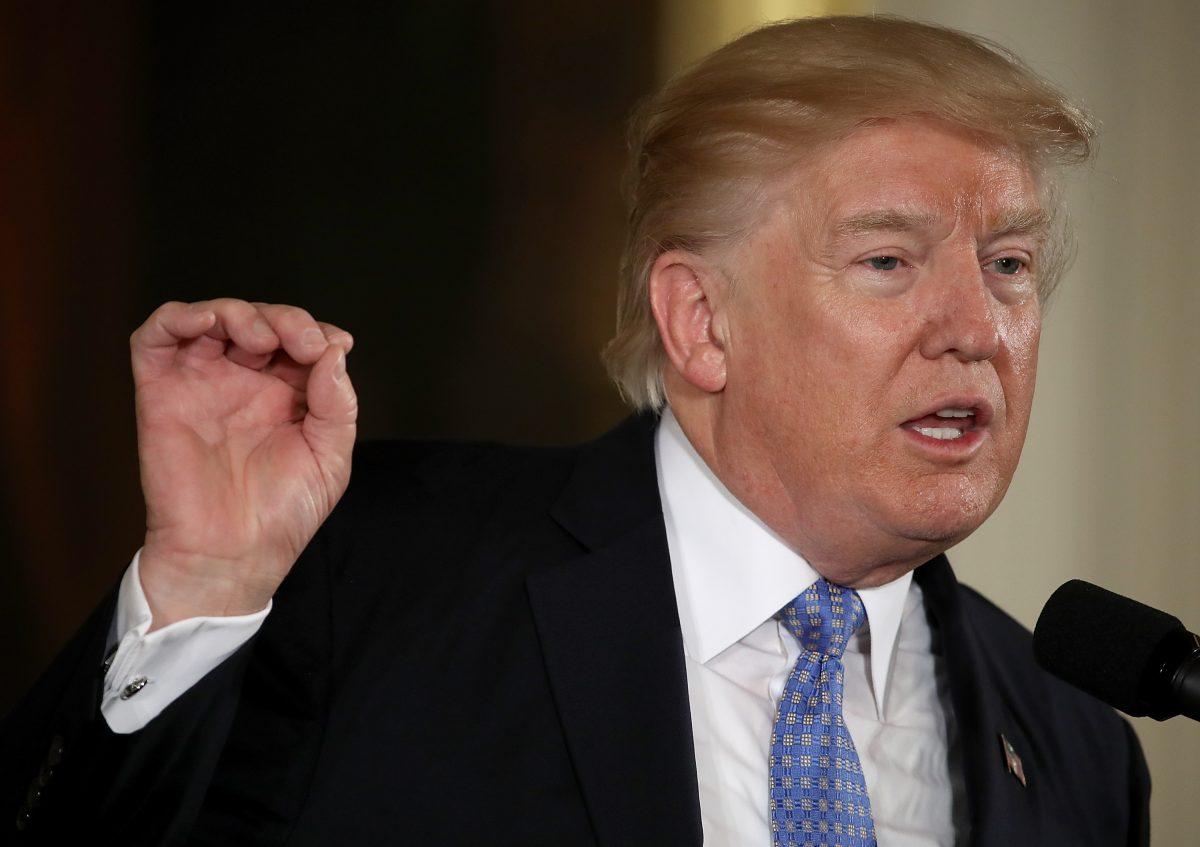The average family of four that qualifies for assistance from the Supplemental Nutrition Assistance Program (SNAP), more commonly known as food stamps, receives $465 from the federal government per month. If divided among its members equally, each person receives a total of $114 a month and an average of $1.35 per meal. Approximately 44 percent of the 45 million Americans who rely on SNAP are children under the age of 18, and nearly one-third of the program’s recipients live in a household with a senior citizen or a disabled person.
This month, the Trump administration proposed a significant budget cut for the program.
Beneficiaries of SNAP currently receive monthly assistance from the federal government through electronic benefit transfer (EBT) cards which they can use to purchase program-approved food items. Trump’s plan would cut the aid of those who receive over $90 a month on their EBT cards in half and replace that money with food boxes that will carry non-perishable foods such as peanut butter, beans, and canned meat, fruits and vegetables. This would give recipients of SNAP less choice in the foods they can purchase for themselves and their families.
Representatives of the Trump administration claim that the purpose of the proposal is to save taxpayer money and to demonstrate that the food boxes will ensure healthier eating habits amongst SNAP recipients. However, there are more effective ways to reduce the federal budget than to cut funding from the relatively small program. The notion that cutting benefits for SNAP recipients in half and sending food boxes in their place will promote healthier eating is both false and insulting. More likely than not, this is the Trump administration’s way of suggesting that poor Americans are undeserving of government money and that they are incapable of selecting the right foods for themselves and their children. If passed, Trump’s proposal would only serve to harm lower-class Americans who are already struggling and further reinforce damaging stereotypes about the poor in the United States.
Trump’s proposal would cut funding for SNAP by over 20 billion dollars, or nearly 30 percent, over the span of a decade. Such a dramatic reduction in federal funding would be devastating for the program and for the low-income Americans who depend on it. Given that the average recipient of SNAP receives less than $1.50 per meal and that 29 percent of food insecure Americans do not quality for any government assistance, the program is clearly underfunded even without an additional cut in funding.
Contrary to the widespread notion that poor Americans are draining the federal government’s resources, only a small percentage of government spending goes towards funding SNAP. In 2012, food stamp spending made up only two percent of the federal budget, as opposed to the 19 percent spent on defense funding. If members of the Republican Party truly wish to reduce government spending, they should make cuts to larger programs, such as the Department of Defense. Reducing funding for SNAP by nearly 30 percent will have a minimal effect on the federal government’s budget but will be extremely detrimental to the program and to its 45 million recipients.
The claim that one of the purposes of the food boxes is to promote healthier eating amongst SNAP beneficiaries is simply laughable. There is a link between poverty and obesity. However, this is because unhealthy foods are often significantly cheaper and easier to prepare than are healthier options. Therefore, reducing the amount of money given to lower-class Americans would further contribute to the problem rather than help solve it. Additionally, it is highly unlikely that food prepared by the government en masse and sent in boxes across the country would be healthier than some of the foods SNAP recipients currently have at least the option of purchasing.
Though members of all socioeconomic classes struggle with obesity and poor eating habits, upper-class Americans constantly scrutinize low-income adults for how they feed their children. The food box proposal further reinforces harmful stereotypes about the poor by insinuating that SNAP recipients are incapable of determining what to feed themselves and their families. It is important to note that the Trump administration has yet to present practical alternatives for families with members who are allergic to items in the box or have religious beliefs that prevent them from eating specific food products.
Given that the proposed budget cut for SNAP will do little to reduce government spending or promote healthier eating, it is highly unlikely that these issues are the Trump administration’s true motivations for targeting the program. This is Trump’s way of insinuating that low-income Americans are undeserving of government aid and that they are incapable of choosing the right foods for themselves and their families. Trump’s proposal has the potential to hurt SNAP recipients both economically and emotionally. I hope conservative leaders pause before agreeing to support Trump and his administration on this absurd proposal.




